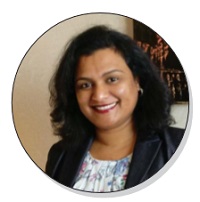The business case for diversity has never been more prominent than it is now. Basic economic theory suggests that consumers will correct for a company's lack of diversity by simply not spending money there, ensuring that slow-to-change organisations go extinct. Similarly, employees are constantly balancing the costs of working somewhere against the personal benefits they derive, including a match in values.
For innovation, creativity, market share, and new opportunities, your workforce needs to reflect your consumers. The demographics of the global population are changing at a rapid pace, and technology has connected us like never before. Your consumers are more diverse than they have ever been in the past. It is high time that you let go of the traditional ways of doing things in terms of recruitment, selection, pay, development, promotion, and retention of talent.
As a consultant, I have met many HR & Business Heads of Indian MNCs, and witnessed an immense lack of awareness - even amongst the C-suite.
The majority of the motivation for starting any Inclusion & Diversity (I&D) work is to keep up with peer companies or to comply with a world headquarter mandate or a moral imperative - "the right thing to do". This has further led to a CSR angle instead of I&D being a business imperative. Many decision-makers think recruitment or mentoring programs will fix diversity and unconscious bias awareness, and other sensitisation programs will make their workplace inclusive.
Understanding the Gap
There is a gap between many I&D initiatives and the actual achievement of desired goals. For example, considerable energy and resources are dedicated towards women's mentoring to a point where women are over-mentored around the world. Yet, the number of women at senior executive levels is not even close to the number of women who have been through these programs, nor does it reflect the percentage of women in the organisation's workforce.
A business head of an MNC shared with me that they conducted a couple of PWD (People with Disabilities) sensitisation sessions, with no plans of hiring any PWD at all. He just wanted to use his CSR funds and 'feel good' about giving back to the community. During subsequent discussions with the HR leaders and team members, I realised that all of them struggled with even the basic conceptual understanding of I&D, and they were planning to conduct an I&D offsite where the facilitator would be a Leadership Coach. None of them had any background in I&D, and they were supposed to plan the annual charter for it. These are the companies that later complain about their I&D dollars being wasted. Organisations would not tolerate leaders who did not understand finance or marketing and would train them in those skills, so why is a lack of knowledge of diversity and inclusion tolerated? Considering that we are all reasonably intelligent, I&D is not that difficult to understand.
Another problem is that most organisations consider I&D to be gender diversity alone. The conversation is slowly moving towards the inclusion of PWD and LGBTQ+. Literally, a handful of organisations hire from the pool of part-time workers, retired consultants, and other minority segments. Here is another fact: Unless you are amongst the known consulting firms, organisations consider hiring I&D consultants for recruitment and sensitisation programs only. Most consultants offering I&D solutions in India are either into recruitment or training. Hence, it becomes even more difficult for decision-makers to understand that I&D is way beyond these two functions. A classic approach to filling I&D vacancies is to have an in-house HR or L&D incumbent put into this role with no astuteness.
Incorporating Inclusion
'Inclusion' means removing all excluding barriers as well as promoting mindsets, behaviour, processes, and practices that embrace differences. Inclusion is about making employees feel that they belong, are valued and can contribute to their fullest. It is about ensuring that everyone has a voice, can speak up, and that diversity of knowledge, perspectives, and information is sought and applied while making decisions or solving tasks. Diversity is a fact and is multi-dimensional - who we are (gender, ethnicity, culture, age, or sexuality), what we do (education, industry, function, or department) and how we do it (thinking or interaction styles). A highly inclusive culture with a diverse workforce leads to better decision-making, teamwork, collaboration, financial return, customer/market perspectives, innovation, creativity, and talent engagement.
For any diversity initiative to survive and thrive, it needs to be nurtured in an inclusive environment. For example, when you hire talent from different states in India and if a few team members continue using a regional language instead of the common language, then it will make others feel like outsiders. When you hire a woman in an all-male group, you need to make sure that she is not left out of gender-based team activities or is not subject to sexist comments.
It is essential to stay away from short-term results and focus on core organisational development that addresses systemic issues healthily and sustainably. Consider establishing a collaborative organisational vision with regular interventions that address culture and leadership building. It is important to understand that sensitisation training does not equip us to control our unconscious mind. Overcoming unconscious biases requires deliberately designing the system in a manner that eliminates such bias.
Making I&D a Part of Your Organisation's DNA
Governance and Accountability
It is true that what gets measured gets done, and unless you measure it, you can't improve it. Measuring I&D initiatives helps track impact, which provides leaders with clarity, so there is more focus on achieving outcomes.
Organisation Culture
- While writing new policies, ensure that they are applicable to every last worker in your organisation.
- Have an I&D checklist ready while reviewing the existing policies or writing new ones.
- Build an inclusive visual environment by using pictures of diverse groups, having gender-neutral conference room names, etc.
- Communicate the code of conduct of zero tolerance for discrimination, harassment, etc.
Recruitment
- Use software tools to draft bias-free job descriptions, and broaden your base of candidates.
- Look for culture-add and not culture-fit candidates.
- Consider hiring from these groups: PWD, LGBTQ+, women on break, the long-term unemployed, retirees, and former employees. Also, consider the options of part-time work, job sharing, work from home, and make sure that your career page features I&D initiatives.
I&D Expertise
Invest and work with consultants who go beyond awareness programs and provide practical interventions for changing behaviour, culture, and systems to create inclusive organisations.
Has COVID-19 forever changed the way we live and work?
Trending
-
SBI General Insurance Launches Digital Health Campaign
-
CredR Rolls Out 'Life Happens' Leave For Its Employees
-
Meesho Announces 30-Week Gender-Neutral Parental Leave Policy
-
Microsoft Unveils Tech Resilience Curriculum To Foster An Inclusive Future
-
60% Indian Professionals Looking For Job Change Due To COVID: Survey
-
SpringPeople And Siemens Collaborate For Digital Transformation Push
-
86% Professionals Believe Hybrid Work Is Essential For Work Life Balance: Report
-
Almost 1 In Every 3 People's Personal Life Affected Due To Work Stress
-
Meesho Rolls Out Reset And Recharge Policy For Employees
-
80% Of Talent Leaders & Academics Say Pandemic Changed Skill Needs For Youth: Report
-
Hero Electric Rolls Out 'Hero Care' Program For Employees
-
Human Capital In Collaboration With ASSOCHAM Hosts Virtual Conference
-
IKEA India, Tata STRIVE Collaborate To Create Employability And Entrepreneurship Opportunities
-
SAP India, Microsoft Launch Tech Skilling Program for Young Women
-
DXC Technology, NASSCOM Collaborate For Employability Skills Program
-
Lenskart To Hire Over 2000 Employees Across India By 2022
-
Mindtree Launches Learn-and-Earn Program
-
Tata AIA Extends 'Raksha Ka Teeka' To Its Employees
-
Swadesh Behera Is The New CPO Of Titan
-
NetConnect Global Plans To Recruit 5000 Tech Professionals In India
-
Hubhopper Plans To Hire 60% Of Indian Podcasters By 2022
-
Corporate India Needs More Women In Leadership Roles: Report
-
Aon to Invest $30 Million and Create 10,000 Apprenticeships by 2030
-
Tech Mahindra Launches ‘Gift a Career’ Initiative for Upskilling of Youth
-
40% Women Prefer Flexible Working Options in Post-COVID World: Survey
-
3 out of 4 companies believe they can effectively hire employees virtually: Report
-
Vodafone , CGI and NASSCOM Foundation launch digital skills platform
-
Odisha: Bank, postal employees to deliver cash for elderly, differently-abled persons
-
Skill India launches AI-based digital platform for "Skilled Workforce"
-
Hiring activity declines 6.73% in first quarter: Survey
-
70% startups impacted by COVID-19 pandemic
-
Bajaj Allianz Life ropes in Santanu Banerjee as CHRO
-
Over 70 Percent MSMEs look at cutting jobs to sustain businesses
-
93 Per Cent employees stressed about returning to office post-lockdown
-
Johnson & Johnson India announces family benefits for same gender partners
-
Indian firms turning friendly towards working mothers
-
Welspun India names Rajendra Mehta as new CHRO
-
Wipro partners with NASSCOM to launch Future Skills platform



Human Capital is niche media organisation for HR and Corporate. Our aim is to create an outstanding user experience for all our clients, readers, employers and employees through inspiring, industry-leading content pieces in the form of case studies, analysis, expert reports, authored articles and blogs. We cover topics such as talent acquisition, learning and development, diversity and inclusion, leadership, compensation, recruitment and many more.
Subscribe Now













































Comment